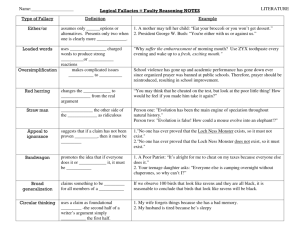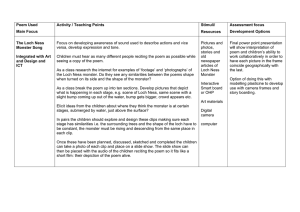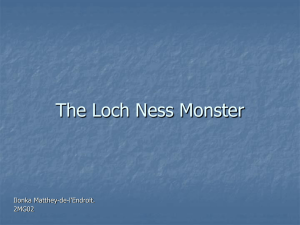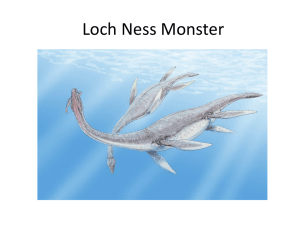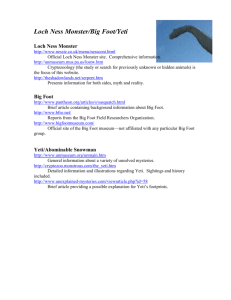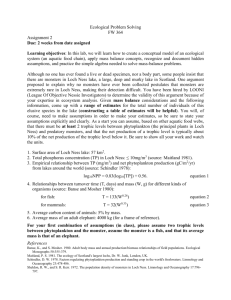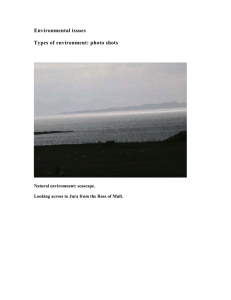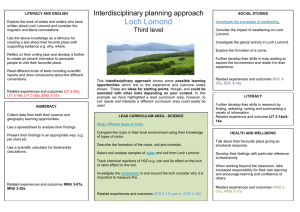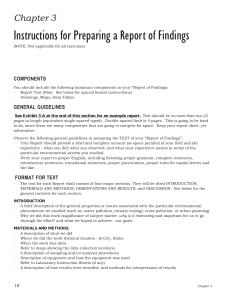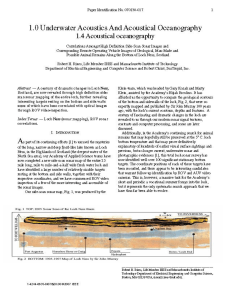Class 4 Homework
advertisement
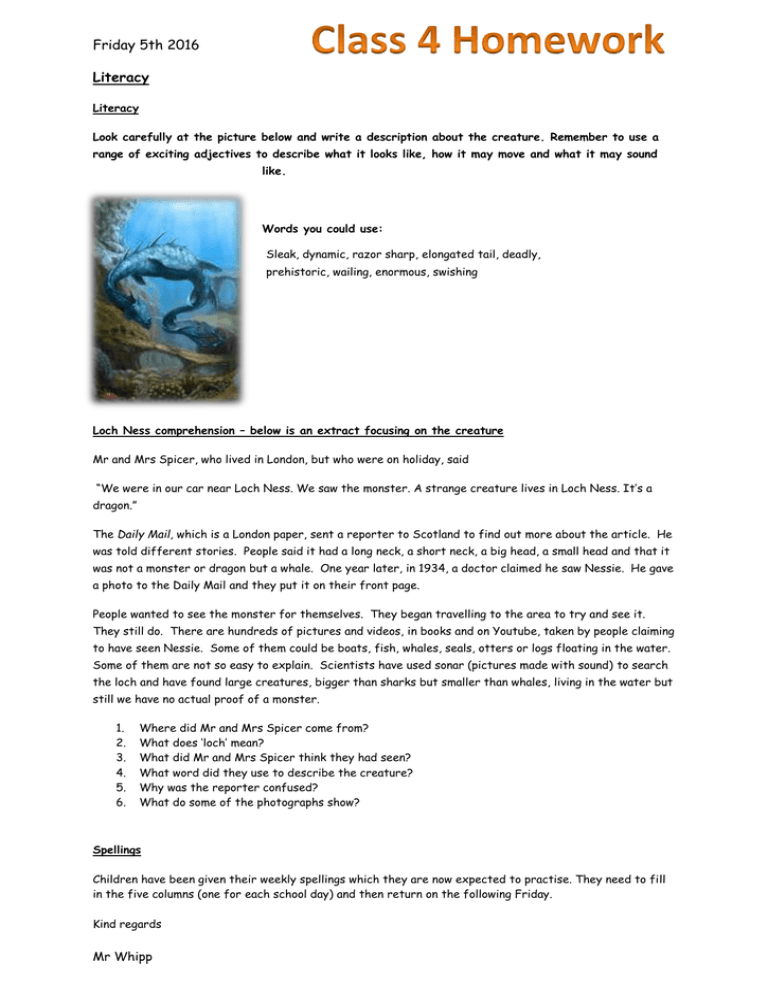
Friday 5th 2016 Literacy Literacy Look carefully at the picture below and write a description about the creature. Remember to use a range of exciting adjectives to describe what it looks like, how it may move and what it may sound like. Words you could use: Sleak, dynamic, razor sharp, elongated tail, deadly, prehistoric, wailing, enormous, swishing Loch Ness comprehension – below is an extract focusing on the creature Mr and Mrs Spicer, who lived in London, but who were on holiday, said “We were in our car near Loch Ness. We saw the monster. A strange creature lives in Loch Ness. It’s a dragon.” The Daily Mail, which is a London paper, sent a reporter to Scotland to find out more about the article. He was told different stories. People said it had a long neck, a short neck, a big head, a small head and that it was not a monster or dragon but a whale. One year later, in 1934, a doctor claimed he saw Nessie. He gave a photo to the Daily Mail and they put it on their front page. People wanted to see the monster for themselves. They began travelling to the area to try and see it. They still do. There are hundreds of pictures and videos, in books and on Youtube, taken by people claiming to have seen Nessie. Some of them could be boats, fish, whales, seals, otters or logs floating in the water. Some of them are not so easy to explain. Scientists have used sonar (pictures made with sound) to search the loch and have found large creatures, bigger than sharks but smaller than whales, living in the water but still we have no actual proof of a monster. 1. 2. 3. 4. 5. 6. Where did Mr and Mrs Spicer come from? What does ‘loch’ mean? What did Mr and Mrs Spicer think they had seen? What word did they use to describe the creature? Why was the reporter confused? What do some of the photographs show? Spellings Children have been given their weekly spellings which they are now expected to practise. They need to fill in the five columns (one for each school day) and then return on the following Friday. Kind regards Mr Whipp
